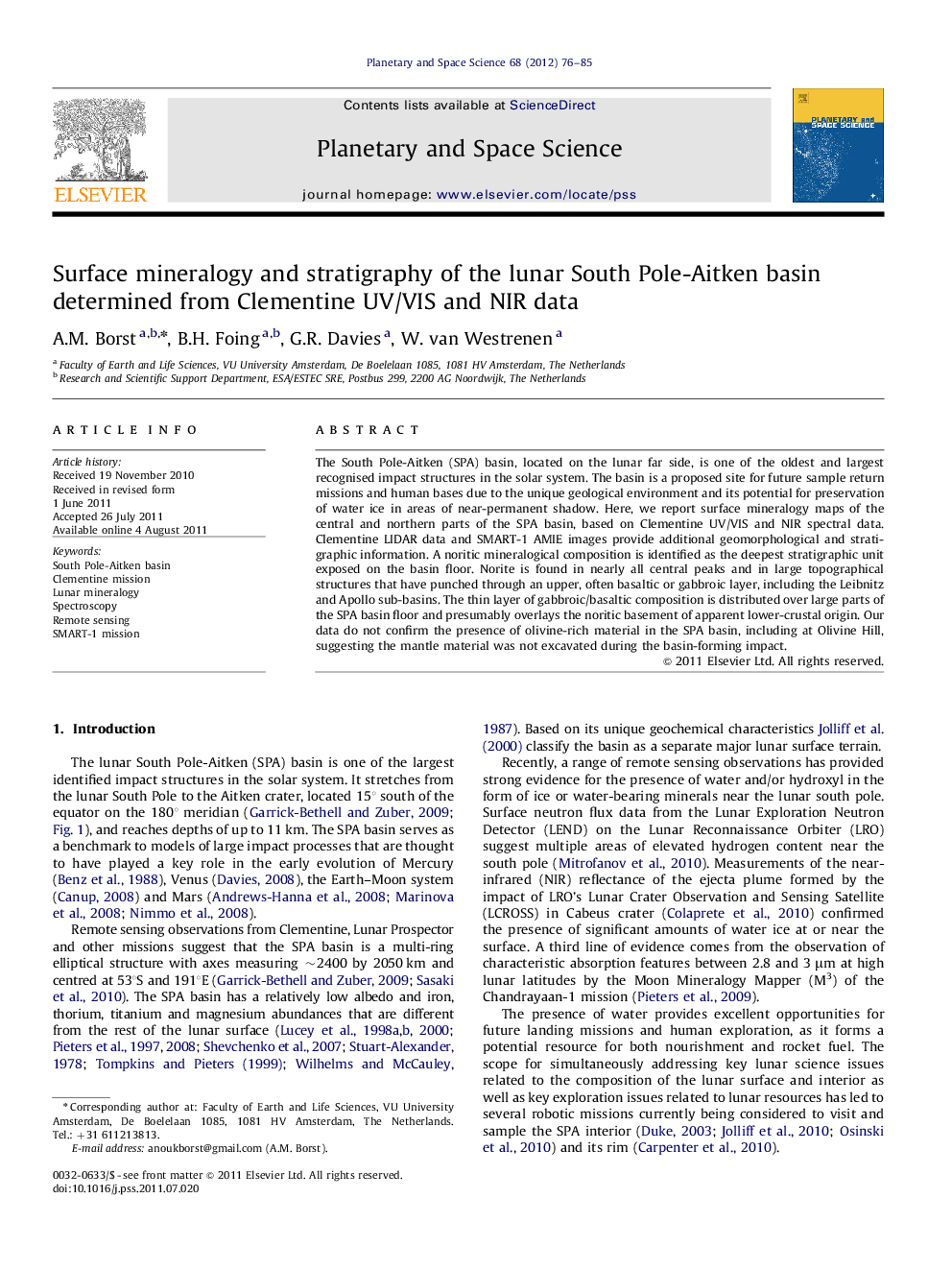| Article ID | Journal | Published Year | Pages | File Type |
|---|---|---|---|---|
| 1781469 | Planetary and Space Science | 2012 | 10 Pages |
The South Pole-Aitken (SPA) basin, located on the lunar far side, is one of the oldest and largest recognised impact structures in the solar system. The basin is a proposed site for future sample return missions and human bases due to the unique geological environment and its potential for preservation of water ice in areas of near-permanent shadow. Here, we report surface mineralogy maps of the central and northern parts of the SPA basin, based on Clementine UV/VIS and NIR spectral data. Clementine LIDAR data and SMART-1 AMIE images provide additional geomorphological and stratigraphic information. A noritic mineralogical composition is identified as the deepest stratigraphic unit exposed on the basin floor. Norite is found in nearly all central peaks and in large topographical structures that have punched through an upper, often basaltic or gabbroic layer, including the Leibnitz and Apollo sub-basins. The thin layer of gabbroic/basaltic composition is distributed over large parts of the SPA basin floor and presumably overlays the noritic basement of apparent lower-crustal origin. Our data do not confirm the presence of olivine-rich material in the SPA basin, including at Olivine Hill, suggesting the mantle material was not excavated during the basin-forming impact.
Research highlights► Clementine UV/VIS and NIR data used to map mineralogy and stratigraphy of South Pole-Aitken Basin. ► Norite is identified as the deepest stratigraphic unit exposed by the SPA basin impact. ► Our results suggest that no mantle material is exposed in the SPA basin interior.
